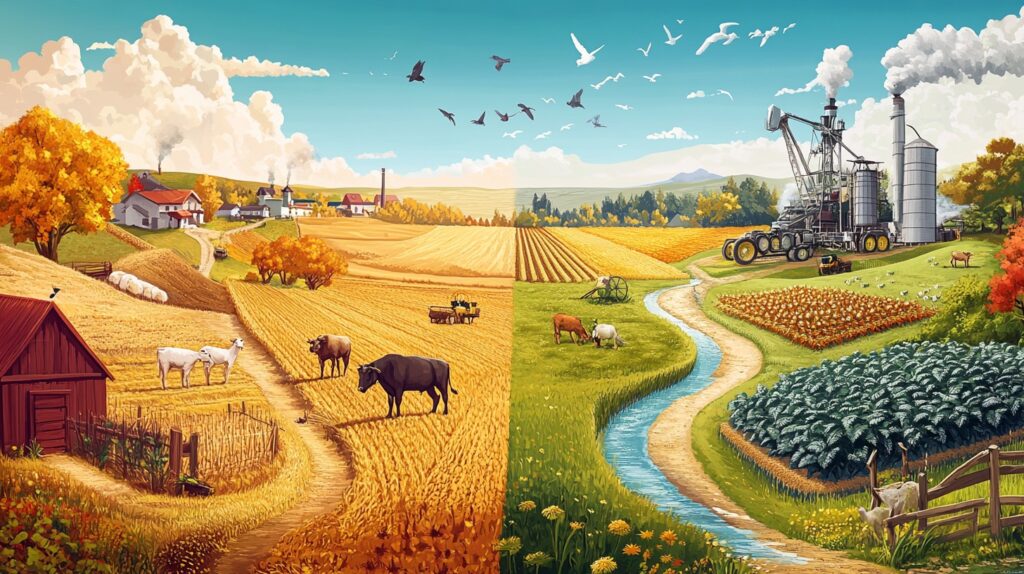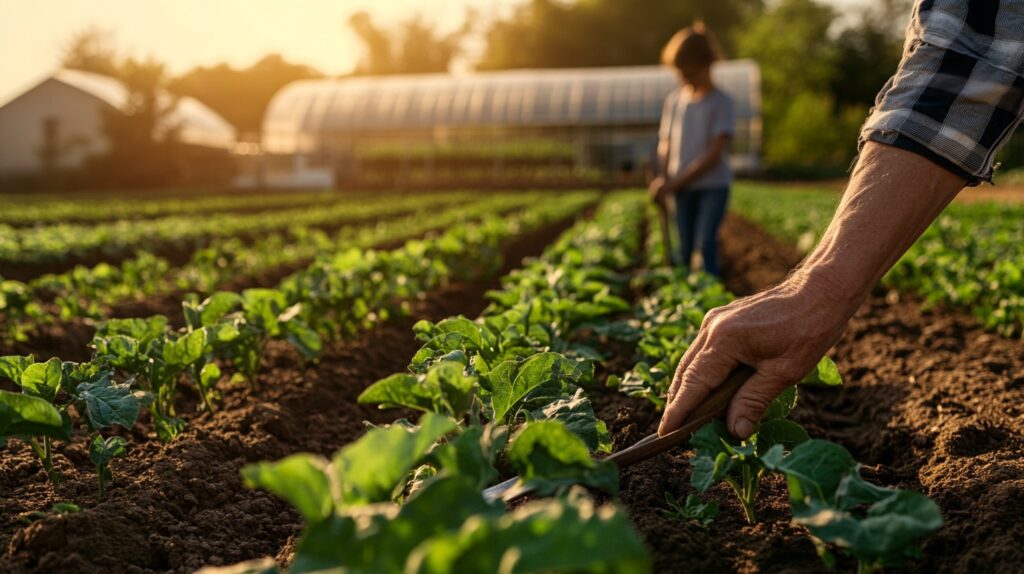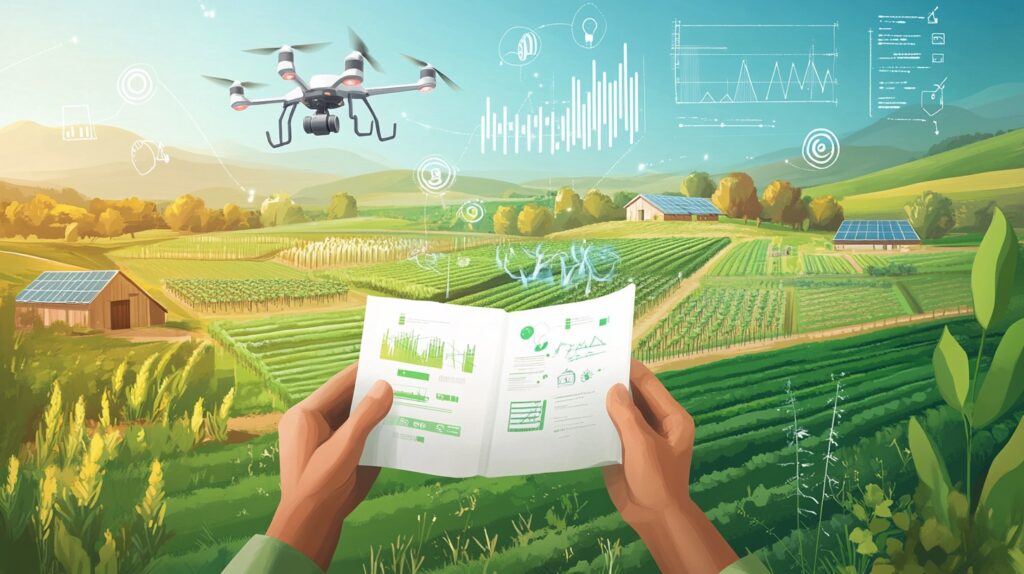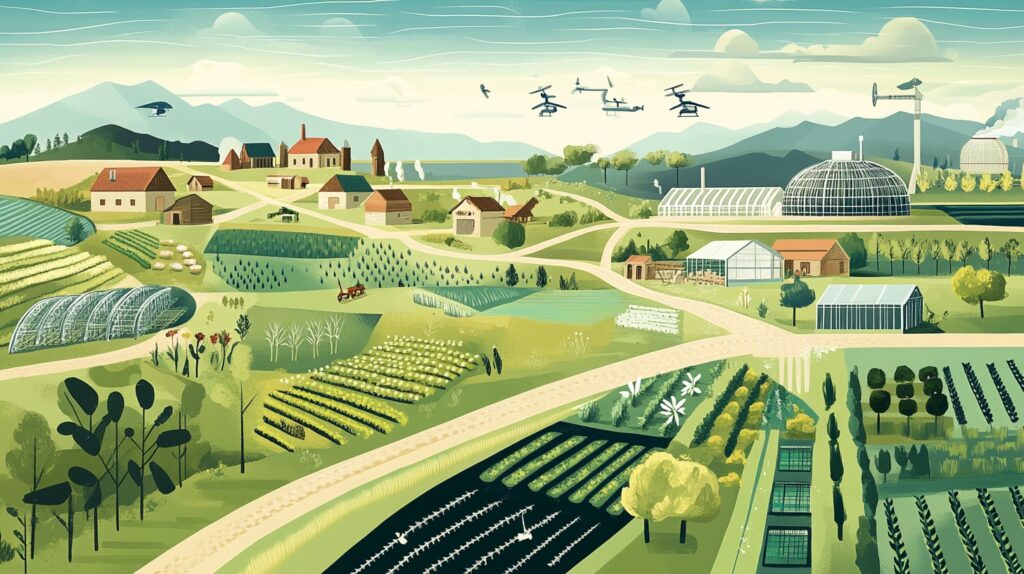This blogpost, Hydroponic Farming: A Sustainable Solution for Modern Agriculture from the Grand Friend Project, was created by the GrandFriend consortium. Grandfriend is an EU Funded project named “Intergenerational Hub for the Amelioration of Sustainable Agricultural Practices and Entrepreneurial Mindset” with the reference number 2022-1-DE02-KA220-ADU-000085106. L4Y Learning for Youth GmbH coordinates it with the partners KMOP, Polish Farm Advisory, Citizens in Power, Challedu.
Learn more by accessing the home page of the project. Alternatively, follow us on LinkedIn, as well as Facebook social media pages.
Learning Objectives
- Understand the basics and principles of hydroponic systems.
- Identify the environmental and practical benefits of hydroponic agriculture.
- Explore how controlled nutrient solutions enhance plant growth and sustainability.
- Examine the challenges and future trends in hydroponics.
- Encourage intergenerational learning by connecting traditional and modern farming practices.
- Recognize the potential of hydroponics in addressing global food security challenges.
- Understand the role of advanced technologies in improving hydroponic efficiency and sustainability.
Introduction
Modern agriculture faces increasing challenges, including water scarcity, soil degradation, and the need to feed a growing population. As a result, innovative solutions like hydroponic farming have gained momentum. In response, hydroponics has emerged as a revolutionary solution. This innovative, soil-less farming method allows plants to grow in nutrient-rich water under precisely controlled conditions. For young people, hydroponics represents a forward-thinking, eco-friendly practice. At the same time, for older generations, it evokes traditional gardening values adapted for modern sustainability. By exploring hydroponics, we can promote environmentally friendly food production while fostering greater intergenerational collaboration (Resh, 2021).
Hydroponics not only addresses immediate agricultural challenges but also paves the way for a more resilient food system. It enables efficient resource use and offers scalable solutions for urban and rural communities alike. This modern approach to farming creates opportunities for education, employment, and community-building, while also fostering innovation to meet the demands of a rapidly changing world.
Definition and Basics
Hydroponics is a method of growing plants without soil, using water enriched with nutrients essential for plant growth. Therefore, it offers a modern approach to agriculture that overcomes soil limitations. In this system, farmers control environmental factors such as pH levels, temperature, and light exposure, creating an ideal growing environment (Resh, 2021).
One of hydroponics’ primary benefits is its adaptability. Systems can be small enough to fit in a kitchen or large enough to supply food for urban centres. This scalability makes it accessible to people of all ages and backgrounds. For instance, urban farming projects in small apartments and commercial-scale vertical farms both showcase hydroponics as a versatile and sustainable way to produce food (Food and Agriculture Organization [FAO], 2020).
Additionally, hydroponic systems allow for experimentation with different crops, ensuring that even exotic plants can be grown in non-native climates. This flexibility supports biodiversity and provides opportunities for agricultural diversification, which can be crucial for economic resilience and ecological balance.
Importance of Controlled Nutrient Solutions
The heart of hydroponics lies in its ability to precisely control nutrient delivery. Unlike soil-based farming, where nutrient availability can vary, hydroponic systems dissolve nutrients directly into the water. This ensures plants receive the exact minerals they need, at the right concentrations, for optimal growth. Consequently, this leads to healthier and more robust plants (Savvas & Gruda, 2018).
- pH Regulation: Maintaining a stable pH (usually 5.5–6.5) is crucial for nutrient absorption. If pH levels stray too far from this range, plants may struggle to access key nutrients (Hydroponic Society of America, n.d.).
- Automated Systems: Many modern hydroponic setups use automated dosing systems that monitor and adjust pH and nutrient levels in real-time. As a result, human error is minimised, ensuring consistency (Resh, 2021).
- Oxygenation: In addition to nutrients, oxygen is essential for root health. Aerated solutions help roots absorb nutrients more efficiently, preventing waterlogging or suffocation (FAO, 2020).
Advanced nutrient delivery systems have also made it possible to optimize plant growth cycles. Customizable nutrient mixes can target specific growth stages, such as flowering or fruiting, ensuring that crops reach their full potential. These innovations are particularly important for high-value crops, such as medicinal plants or specialty herbs.
Advantages Over Traditional Soil Cultivation
Hydroponic farming offers several advantages compared to traditional soil-based agriculture:
- Water Efficiency
Hydroponic systems can reduce water use by up to 90%. Water recirculates through the system, minimising waste, making hydroponics particularly valuable in regions with limited water resources (Savvas & Gruda, 2018). This water-saving feature also reduces the impact of droughts. Therefore, it ensures reliable food production even under challenging climatic conditions. - Space Optimisation
Vertical farming utilises stacked layers to grow crops in smaller spaces. Moreover, it makes efficient use of urban areas with limited land. For example, Singapore’s Sky Greens vertical farm produces leafy greens using 95% less water and 75% less land than conventional methods (Meadowcroft, 2022). Innovations in vertical farming design, such as rotating shelves or automated lighting, further enhance productivity and resource efficiency. - Faster Growth and Higher Yields
Because plants have direct access to nutrients and an ideal environment, they grow up to 25% faster than soil-grown plants, yielding more harvests per year (Savvas & Gruda, 2018). This accelerated growth rate supports year-round cultivation, reducing the need for seasonal adjustments and ensuring a steady food supply. - Pest and Disease Control
Without soil, plants are less susceptible to soil-borne pests and diseases, reducing the need for pesticides (Resh, 2021). By minimizing chemical use, hydroponic farming supports healthier ecosystems and reduces the risk of harmful residues in food.
Types of Hydroponic Farming Systems
- Nutrient Film Technique (NFT): This system involves a thin film of nutrient solution flowing past the roots. It ensures continuous oxygen and nutrient supply, making it highly efficient (Hydroponic Society of America, n.d.).
- Deep Water Culture (DWC): In DWC, roots are submerged in a constantly aerated nutrient solution. Therefore, it is simple and effective, often used for growing leafy greens like lettuce (Resh, 2021).
- Ebb and Flow (Flood and Drain): This system periodically floods the growing tray with nutrient solution before draining, allowing roots to absorb nutrients and oxygen alternately (Savvas & Gruda, 2018).
- Drip Systems: A drip system delivers water and nutrients directly to the base of each plant, reducing waste and improving efficiency (FAO, 2020).
- Aeroponics: In this advanced method, roots hang in the air and are misted with a nutrient solution. This setup maximises oxygen exposure and nutrient absorption, enabling rapid growth (Resh, 2021).
Emerging hybrid systems, which combine techniques like aeroponics and NFT, are also gaining traction. These systems integrate the benefits of multiple approaches, offering enhanced efficiency and versatility.
Key Considerations for Nutrient Management
To achieve optimal results, growers must focus on the following factors:
- Electrical Conductivity (EC): EC measures the concentration of dissolved salts, ensuring the nutrient solution is neither too weak nor too strong (Hydroponic Society of America, n.d.).
- Temperature Control: Maintaining consistent temperatures (both ambient and solution) is critical. Extreme temperatures can impact nutrient solubility and plant metabolism (Savvas & Gruda, 2018).
- Monitoring Tools: Advanced sensors now allow for real-time adjustments, ensuring the ideal balance of nutrients, pH, and oxygen levels (Resh, 2021).
Additionally, nutrient recycling practices are being explored to further reduce waste. By capturing and reusing excess nutrients, hydroponic systems can become even more sustainable and cost-effective.
Environmental Impact of Hydroponic Farming
Hydroponics offers several environmental benefits, making it an attractive option for sustainable food production:
- Reduced Water Waste: The closed-loop system minimises runoff and pollution (FAO, 2020).
- Urban Farming: Hydroponics can be implemented in city centres, reducing transportation emissions associated with food supply chains (Meadowcroft, 2022).
- Reduced Chemical Use: With fewer soil-borne pests, hydroponic systems typically require fewer pesticides and herbicides (Savvas & Gruda, 2018).
Hydroponic agriculture also promotes local food production, which strengthens community resilience and reduces reliance on global supply chains. This localized approach supports fresh, nutrient-rich food availability while lowering the environmental footprint of transportation and packaging.
Challenges and Considerations of Hydroponic Farming
Despite its many advantages, hydroponics faces some challenges:
- High Initial Costs: Specialised equipment such as pumps, aerators, and sensors can make setup expensive. However, long-term savings often outweigh these costs (Resh, 2021). Cost-sharing initiatives and government subsidies are being explored to make hydroponics more accessible.
- Power Dependency: Hydroponic systems rely on electricity to run pumps, lights, and monitoring devices. However, integrating renewable energy solutions can help mitigate this dependency (Hydroponic Society of America, n.d.). Backup power solutions and renewable energy integration are critical for mitigating this dependency.
- Technical Knowledge: Operating a hydroponic system requires an understanding of nutrient management, pH balance, and system maintenance. Education and training can help bridge this gap, making hydroponics accessible to all (FAO, 2020).
Future Trends
The future of hydroponics is bright, with several advancements on the horizon:
- Integration with Renewable Energy: Solar panels and wind turbines can power hydroponic systems, reducing their environmental footprint (Meadowcroft, 2022).
- AI and Data Analytics: Artificial intelligence enables precision farming by analysing data to optimise growth cycles, nutrient recipes, and lighting schedules (Savvas & Gruda, 2018).
- Expansion of Urban Agriculture: As cities grow, hydroponic farms are likely to become more widespread, contributing to local food security (FAO, 2020).
Biodegradable growing media and alternative energy-efficient lighting systems, such as LEDs, are also being developed to make hydroponic farming even more sustainable.
Success Story: Inspiring Generations
A compelling example of intergenerational hydroponic farming is the Rooftop Garden Project in Montreal, Canada. This initiative combines modern hydroponic techniques with traditional gardening wisdom. Older participants share their knowledge of plant care, while younger members contribute technological expertise. Together, they cultivate fresh produce for the community, reducing food miles and fostering environmental stewardship (FAO, 2020).
Similar initiatives worldwide are demonstrating the power of collaboration between generations, showcasing how diverse perspectives can drive innovation and build stronger communities.
Resources for Learning about Hydroponic Farming
- Books:
- Hydroponic Food Production by Howard Resh
- The Urban Farmer by Curtis Stone
- Websites:
- Hydroponic Society of America
- FAO Hydroponics Guide
- Courses:
- Introduction to Hydroponics on Coursera
- Advanced Hydroponic Techniques on Udemy
Expert Advice for Hydroponic Farming
According to Dr. Howard Resh, a hydroponics pioneer, “Hydroponics has the potential to revolutionise food production. By reducing water waste and increasing yields, it can meet global food demands sustainably” (Resh, 2021).
Conclusion
Hydroponic systems represent a sustainable and efficient approach to modern agriculture, addressing key challenges like water scarcity, land use, and food security. By engaging both younger and older generations, we can combine technological innovation with traditional wisdom to create a more sustainable future. It’s time to embrace hydroponics and empower communities to grow food that benefits both people and the planet.
With the continued evolution of hydroponic technology and widespread adoption, this method of farming has the potential to redefine the global agricultural landscape, making sustainable food production a reality for generations to come.
References
- Food and Agriculture Organization (FAO). (2020). The future of food and agriculture: Trends and challenges. Rome, Italy.
- Hydroponic Society of America. (n.d.). Retrieved from https://www.hydroponicsociety.org
- Meadowcroft, A. (2022). Vertical farming in Singapore. Retrieved from https://www.sgreens.com
- Resh, H. (2021). Hydroponic Food Production (7th ed.). Boca Raton, FL: CRC Press.
- Savvas, D., & Gruda, N. (2018). Application of soilless culture technologies in the modern greenhouse industry. European Journal of Horticultural Science, 83(5), 280–293.











